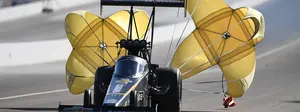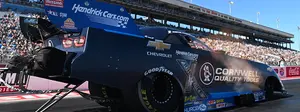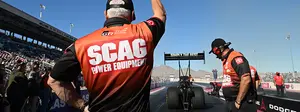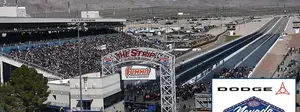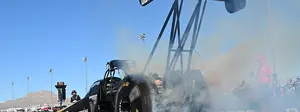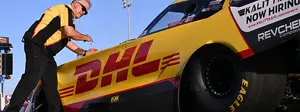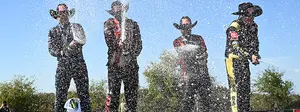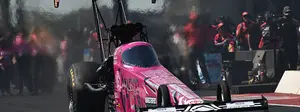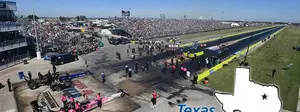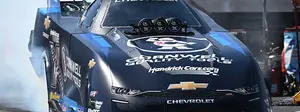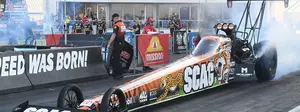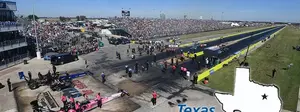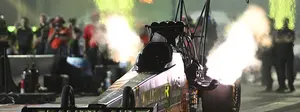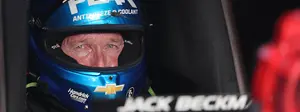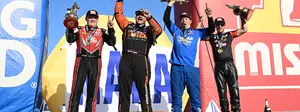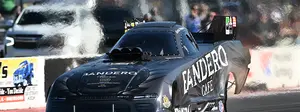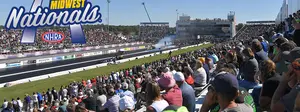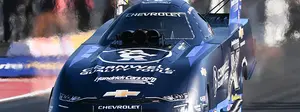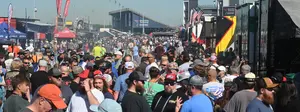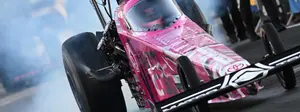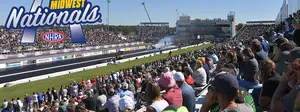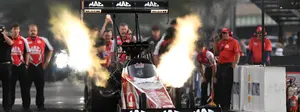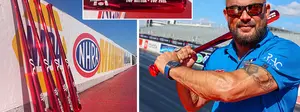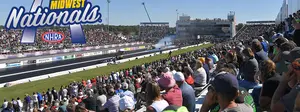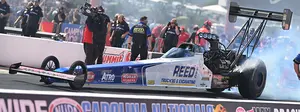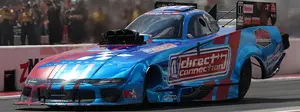

Hey Houston, say hello to the Mountain Motor Pro Stock class
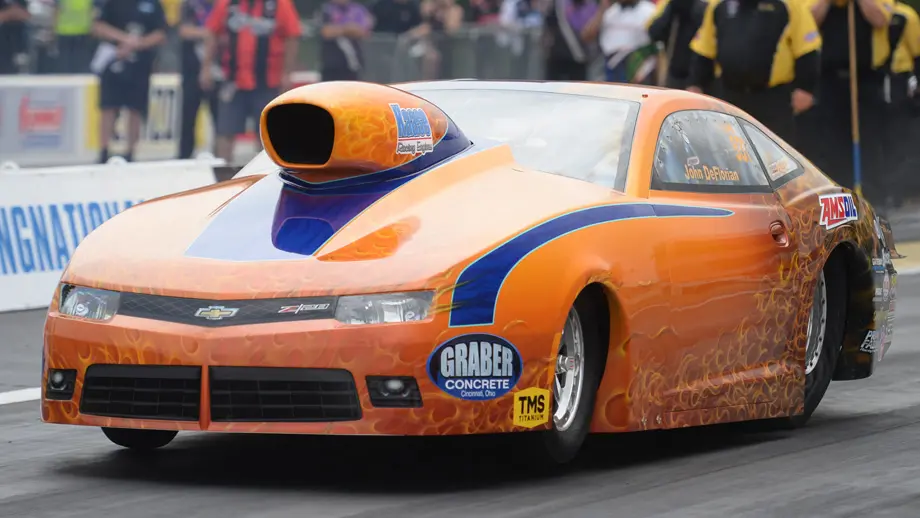
They look a bit like traditional NHRA Pro Stock cars and there is also a bit of a resemblance to some of the cars in the E3 Spark Plugs Pro Mod series. There’s a good reason for that because the Mountain Motor Pro Stock cars that participated in a special exhibition race in Houston borrow a bit of technology from both classes. As the name implies, Mountain Motor Pro Stock cars are equipped with engines that are bigger than their 500-cid NHRA counterparts.
How much bigger? A lot.
The ten drivers who participated in the Houston race were using engines that ranged from 818 to 840-cid. That’s correct, the smallest engine in the field was more than 300-inches bigger than the legal limit for NHRA-style cars. The Mountain Motor cars also have the option of using either electronic fuel injection or carburetors and for fans who remember “the good old days” there are still fitted with bulbous hood scoops. As for performance, the Mountain Motor cars tend to be about three-tenths of a second quicker than the 500-inch cars and they routinely run over 220-mph.
From a driving standpoint, John DeFlorian, who works as the shop foreman at Jerry Haas Race Cars in Missouri, says that wheeling a MMPS car is always an adventure.
“These cars can and will spin the tire in any gear,” said DeFlorian. “The difference is mostly in high gear. In a 500-inch car, they sort of settle down once you hit half-track. These cars keep pulling all the way to the finish line. If you watch closely, they want to move around a lot and you’ve got to be ready for that. They are definitely not as predictable as the NHRA Pro Stock cars.”
Where the NHRA Pro Stock cars are limited by rule to a maximum of 10,500 rpm, the Mountain Motor cars are typically shifted at 8,200 rpm but due to the massive amount of torque the big engines make, they’re able to run much quicker. They big engines are also a bit more forgiving should a driver miss a shift by 50-or so rpm.
DeFlorian was not only a part of the first-ever Mountain Motor exhibition held last year during the Chevrolet Performance U.S. Nationals, he won the special eight-car eliminator. The fan interest from that event helped spur interest in the four-race exhibition which is being held this year. In addition to this weekend’s Houston race, the MMPS cars will race in Charlotte, Bristol, and Epping this summer.
“When we got the call to go to Indy, that was a dream come true,” DeFlorian said. “I’d always wanted to go to Indy and be a part of it, but I’d always imagined myself as a spectator. To not only go there, but to also win the race was beyond words. I can’t thank NHRA enough for having us here this weekend. They’ve been so welcoming to us and the same goes for the fans. I think they’ve really enjoyed seeing us race."
Today, most of the Mountain Motor Pro Stock racing is done in the PDRA series, which is contested on an eighth-mile. The MMPS teams haven’t run many quarter-mile events since the demise of IHRA professional competition several years ago. To that end, DeFlorian holds both ends of the quarter-mile record for MMPS cars at 6.225 and 226.70 mph and he believes both of those marks are in serious jeopardy on Sunday at Houston Raceway Park should the forecast for cooler temperatures hold true. Currently, Christopher Powers is the low qualifier with a 6.294 while DeFlorian is second with a 6.300 in his Amsol-backed Camaro. Seven of the eight qualifiers have topped 220-mph.
“We’re all shooting for that record,” he says. “I’m certainly after it because I’ve had it for three years and I don’t want to let it go.”
























